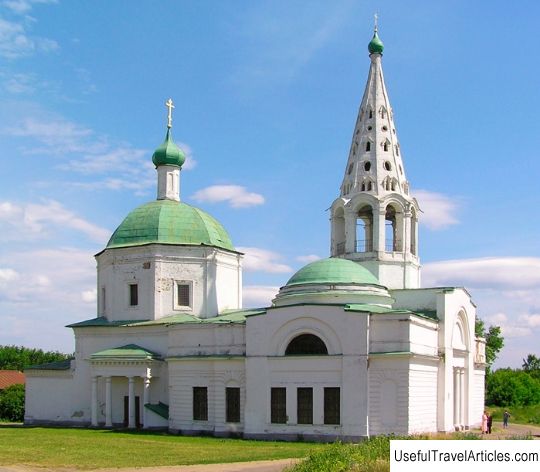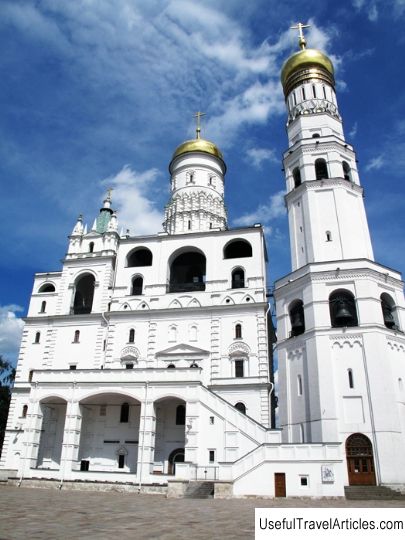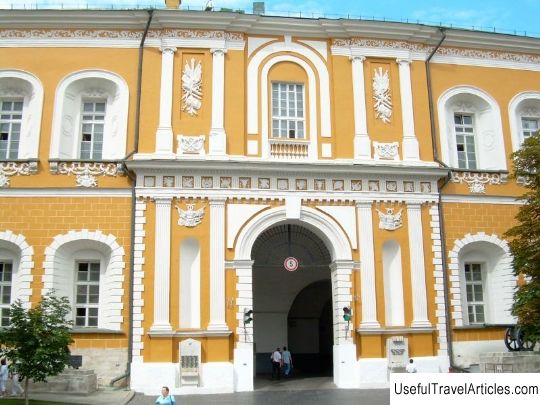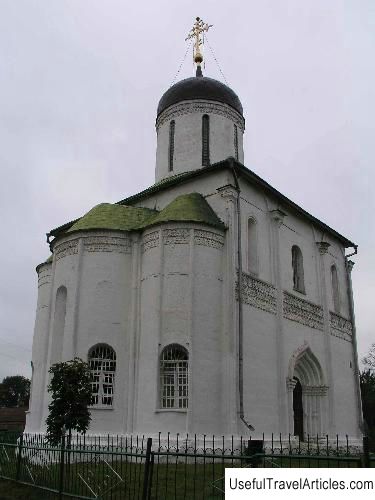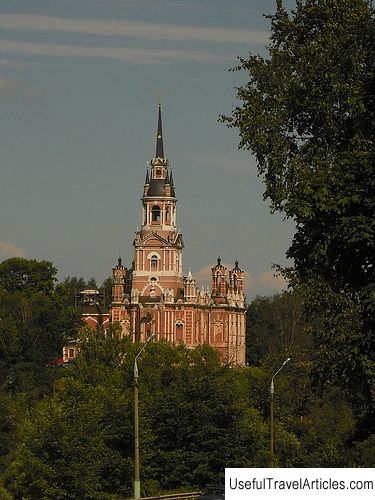Moscow Kremlin description and photo - Russia - Moscow: Moscow
Rating: 8,1/10 (2443 votes) 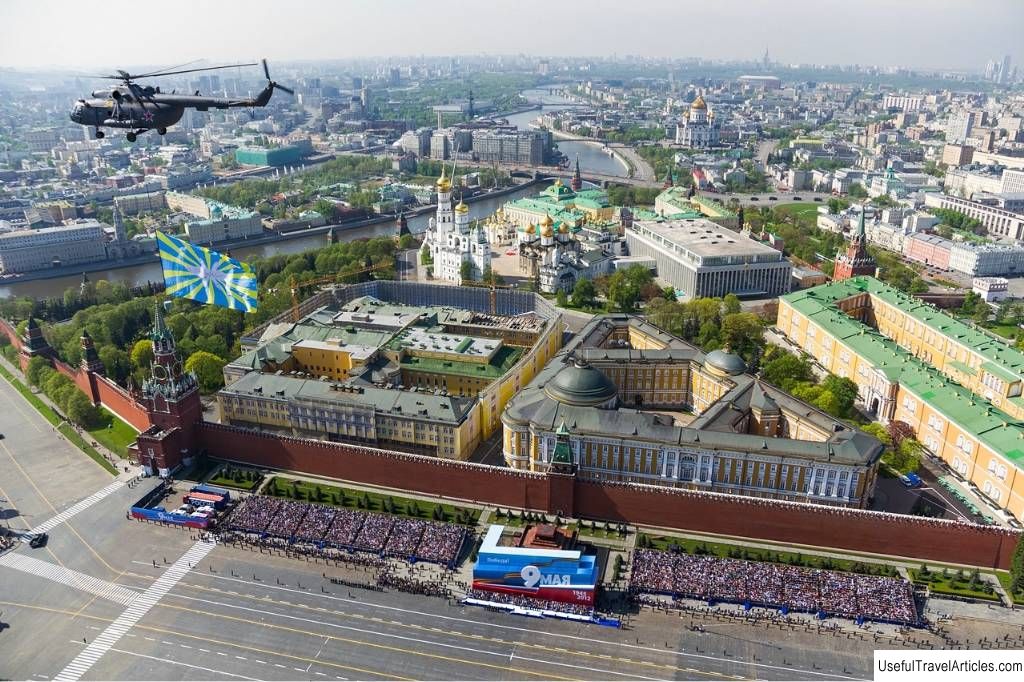
Moscow Kremlin description and photos - Russia - Moscow: Moscow. Detailed information about the attraction. Description, photos and a map showing the nearest significant objects. Photo and descriptionThe Moscow Kremlin is a remarkable architectural ensemble of the 15th-19th centuries. In shape, it is an irregular triangle, the southern side of which faces the Moscow River. It is surrounded by a brick wall with 20 towers of different architecture. The first fortress on Borovitsky Hill was built in the second half of the 13th century and existed for about two hundred years. In the 14th century, white-stone cathedrals, new mansions for the princely family, the metropolitan's courtyard, and boyar courtyards were laid. Under Dmitry Donskoy, white-stone walls and towers were built, but a hundred years later, in 1485-1495, new brick walls and towers of the Kremlin were built. The architects were the Italian architects M. and P. Fryazin and P. Solari. Later, the Kremlin was completed and rebuilt. The transfer of the capital to St. Petersburg affected the quality of the maintenance of the Kremlin: the buildings were dilapidated, burned, the walls were destroyed. The Kremlin suffered greatly during the Patriotic War of 1812, when Moscow was captured by Napoleonic troops. During the armed uprising in October - November 1917, the Kremlin, on the territory of which the cadets' detachments were located, was seriously damaged by artillery shelling by the revolutionary troops. During the years of Soviet power, the architectural ensemble of the Moscow Kremlin was also significantly damaged. In 1929–1930, two ancient Kremlin monasteries were completely demolished. In 1937, ruby stars were installed on five Kremlin towers. Since 1955, the Kremlin has been partially open to the public, becoming an open-air museum. In 1990, the Kremlin was included in the UNESCO World Heritage List. Towers and gates of the Kremlin The main entrance to the Kremlin - Spassky Gate - located on the eastern side, facing Red Square, opposite the Cathedral of St. Basil the Blessed. The Spasskaya Tower was built in the 15th century. In 1625 its hipped roof was erected, on which a clock was installed. The modern clock has been operating since 1851. On the southwestern side of the Kremlin, by the river, there is the Borovitsky Gate, through which Napoleon entered the Kremlin in 1812. From the west, from the side of the Alexander Garden, the Trinity Gate leads to the Kremlin; the tower of the same name used to keep valuable imperial archives. In the northern part of the Kremlin there is the Nikolsky Gate, which faces the northern tip of Red Square. They are used to enter government offices. Blind (impassable) towers were placed between the corner and drive-by towers, intended only to protect the city. Inside, the towers are divided into tiers and connected by passageways along the wall. The height of the walls to the battlements is from 5 to 19 meters, depending on the relief. The height of the teeth is 2-2.5 meters. The thickness of the walls is from 3.5 to 6.5 meters. During the battle, the archers closed the gaps between the teeth with wooden shields and fired through the cracks. The oldest of the Kremlin wall towers are Beklemishevskaya, erected in 1487-1488, and Vodovzvodnaya, in which mechanisms were installed to supply river water to the Kremlin and posad. Palaces and chambers of the Kremlin The Kremlin houses state institutions, ancient palaces and temples. One of the largest buildings is the Grand Kremlin Palace (1838-1849) facing the river. The oldest buildings in the Kremlin include the Faceted Chamber, built in the 15th century, and the Terem Palace, built in the 16th-17th centuries. The interior of the Grand Kremlin Palace consists of many halls and rooms, some of which are used for official receptions. The Faceted Chamber, located in the eastern wing of the Grand Kremlin Palace, was built by Italian architects in 1487-1491 and was intended for banquets and royal receptions. The Terem Palace, in the northern wing of the Grand Kremlin Palace, was built in 1635-1636 by Tsar Mikhail Fedorovich for his sons, and later served as the residence of Tsars Alexei Mikhailovich and Fyodor Alekseevich. The western wing of the palace is occupied by the Armory (1844-1851). This is one of the largest Moscow museums, which contains gold and silver items, clothing, armor, weapons, gifts, royal regalia, carriages and other values of historical interest. Former building of the Judicial Institutions, originally the Senate , erected in 1776-1790 and reconstructed twice in the 19th century, was occupied by the government of the USSR. It is currently the residence of the President of Russia. Before the 1917 revolution, the building was crowned with a crown, which was replaced by the red Soviet flag, in 1991 replaced by the Russian tricolor. Kremlin Cathedrals Among the numerous religious buildings of the Kremlin, the Assumption Cathedral, the Archangel Cathedral and the Annunciation Cathedral stand out. The Assumption Cathedral with five gilded domes was built in 1475-1479, was repeatedly looted and burned, but has invariably been restored to its original form, since the 16th century. became the site of the coronation of kings. Archangel Cathedral, also with five domes, built on the site of the XIV century temple. in 1505-1508 and last restored in 1921, it was the burial vault of the great princes and kings of the Rurik dynasty and the first Romanovs. Opposite the Archangel Cathedral is the Annunciation Cathedral with nine gilded domes, the home church of the Russian tsars. It was built in 1481-1489 and rebuilt in the 16th century. and was subsequently restored several times. The Church of the Deposition of the Robe was built in 1484-1485 and served as a prayer house for the Moscow metropolitans, and with the establishment of the patriarchate it became the home church of the patriarchs. After the construction of the new Patriarchal Palace and the Church of the Twelve Apostles in 1635-1636, the Rizopolozhenskaya was transferred to the sovereign, connecting it with the Terem Palace by a staircase. The five-domed Cathedral of the Twelve Apostles was built on the site of the old church and part of the courtyard of Boris Godunov in 1635-1656 years by Russian craftsmen Antip Konstantinov and Bazhen Ogurtsov by order of Patriarch Nikon. During the restoration in 1929, two aisles located under the church were opened. Currently, the premises of the Patriarch's Chambers and the Church houses the Museum of Applied Art and Life of Russia of the 17th century. The complex of house churches at the Terem Palace includes three churches:
Currently, the terem churches are part of the Grand Kremlin Palace and are part of the Residence of the President of Russia. Divine services are not held there, inspection is prohibited. Ivan the Great Bell Tower The sights of the Kremlin also include the Ivan the Great bell tower (1505-1508), which for a long time was the highest bell tower in Russia, and the Tsar Bell installed in front of it. In 1329, at the behest of the Moscow prince Ivan Kalita, the church-bell tower of John Climacus was built on Borovitsky Hill. In 1505, the old church was dismantled and the architect B. Fryazin built a new church in honor of Grand Duke Ivan the Great. The bell tower was added in 1600 at the behest of Tsar Boris Godunov as part of public works to help the starving. The tower was reconstructed in 1813. The bell tower has five tiers and reaches a height of 81 m. From above it is crowned with a gilded dome with a cross, it currently has 24 bells. There are two belfries adjoining the bell tower, the complex has two churches, one of which used to be a patriarchal sacristy. Tsar Bell is the largest bell in the world. Its weight is about 200 tons. It was cast in 1735 using the bell material damaged in the fire in 1701, but itself was damaged by fire and only in 1836 was it erected on its present pedestal. The Tsar Cannon was cast in 1586 and was considered the largest in its time.                    We also recommend reading Museum ”Honey Farm” description and photos - Russia - North-West: Pskov region Topic: Moscow Kremlin description and photo - Russia - Moscow: Moscow. |




